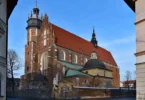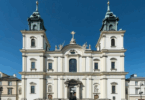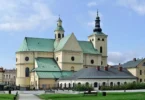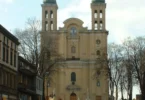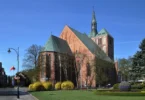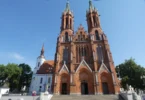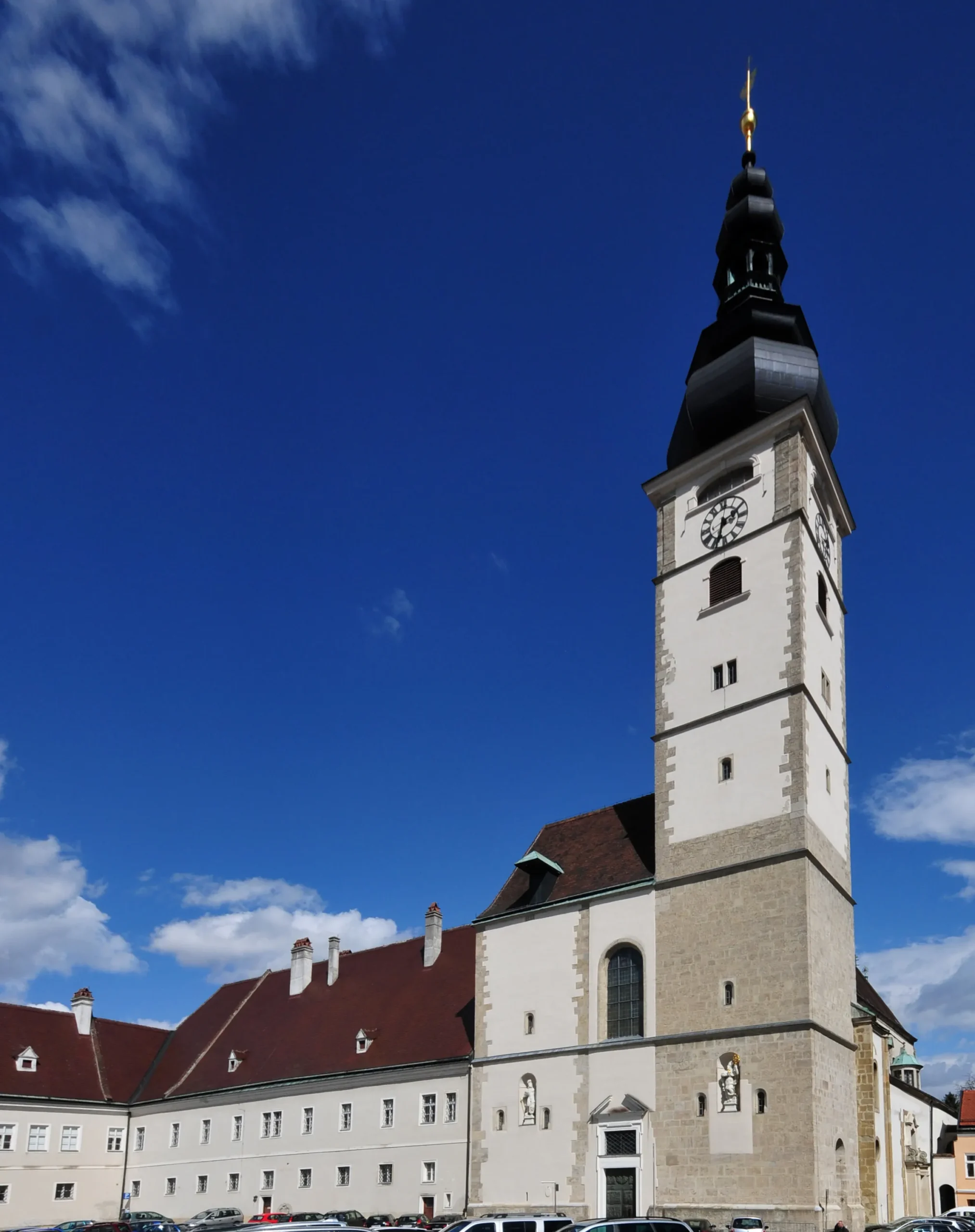
Introduction
The Sankt Pölten Cathedral, officially known as Dom Mariä Himmelfahrt, is a Roman Catholic cathedral located in Sankt Pölten, Lower Austria. Dedicated to the Assumption of the Blessed Virgin Mary, it has served as the episcopal seat of the Diocese of Sankt Pölten since 1785, following the dissolution of the Augustinian Abbey of St. Pölten in 1784. While the cathedral itself is a well-preserved example of late Romanesque architecture, it features a Baroque appearance.
The site has a long history of religious use, dating back to around 790 when a Benedictine monastery was founded here. This monastery housed the relics of Saint Hippolytus, after whom the city is named. By 828, the monastery was part of the Diocese of Passau and played a key role in missionary work in Great Moravia. It was nearly destroyed during a Magyar invasion around 907 and wasn’t rebuilt until after the Battle of Lechfeld in 955. The earliest documented reference to the site is a charter from Emperor Otto II in 976.
Under Bishop Altmann of Passau, the abbey was transformed into an Augustinian canonry, which was later dissolved in 1784 due to the Josephine Reforms. The abbey church was initially rebuilt around 1150 with three naves and a westwork featuring two towers, but without a transept. Bishop Gebhard, in 1228, changed the church’s dedication from Saints Peter, Stephen, and Hippolytus to the Assumption of Mary. After a fire in 1267, the church was rebuilt once more, and following another fire in 1621, it was reconstructed in the present Baroque style.
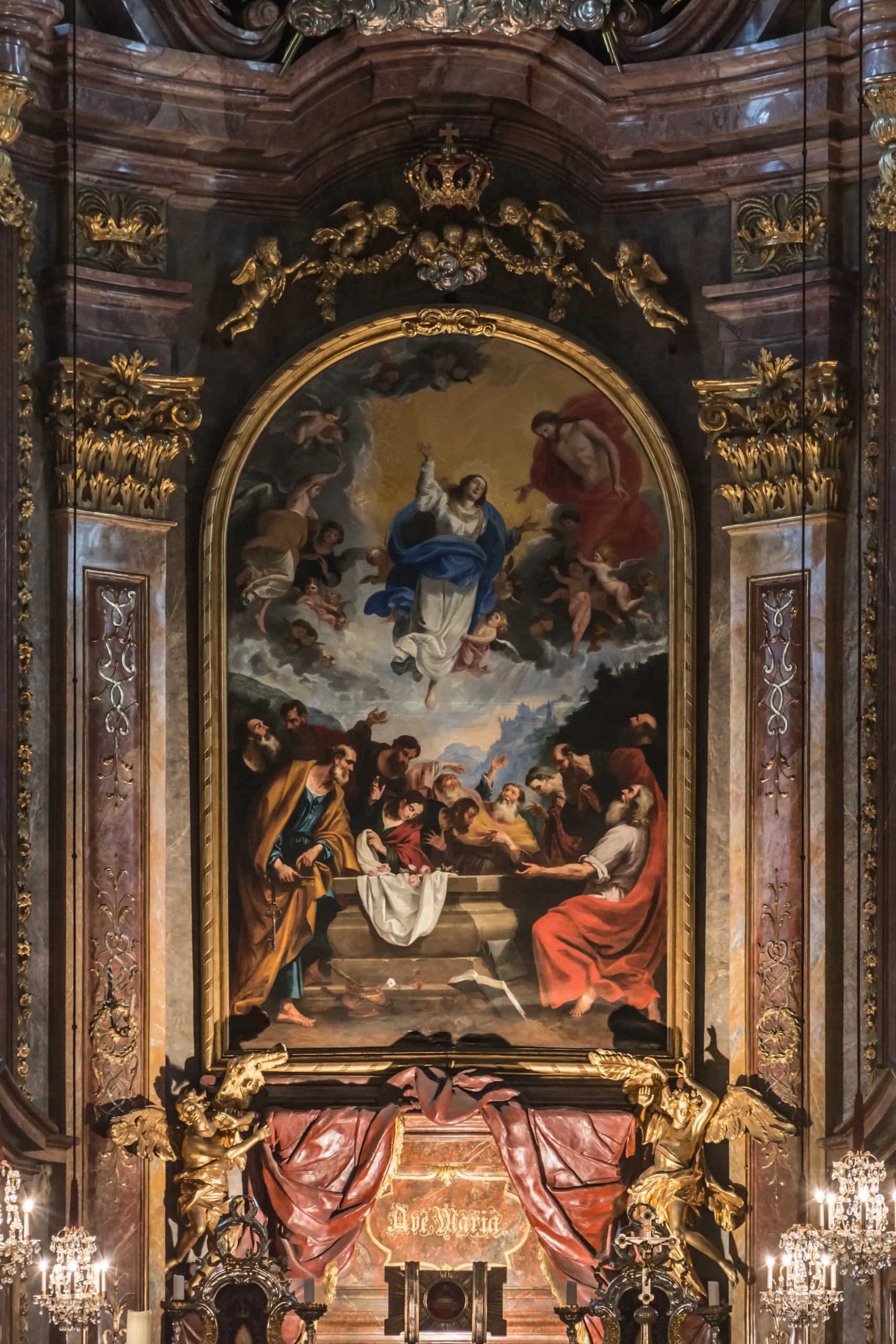
Historical Background
The site of the current Cathedral of St. Pölten has been a place of religious significance since the 8th century. Originally established as a religious site, it evolved into a church dedicated to the Assumption of the Blessed Virgin Mary in the 12th century. The church, a Roman Catholic place of worship, was rebuilt in the Baroque style after suffering multiple fires over the centuries.
Early Foundations
The origins of the Cathedral of St. Pölten trace back to around 790 when Benedictine monks established a monastery here. This monastery housed the relics of Saint Hippolytus, which gave the city its name. By 828, the monastery was part of the Diocese of Passau and played a key role in missionary work in Great Moravia. The site was almost completely destroyed during the Magyar invasion around 907 and was not rebuilt until after the Battle of Lechfeld in 955. The earliest documentary mention of the monastery is from a 976 charter by Emperor Otto II.
Transformation and Rebuilding
In 1081, under Bishop Altmann of Passau, the monastery was converted into an Augustinian Canons monastery. Initially dedicated to Saints Peter, Stephen, and Hippolytus, the dedication was changed to the Assumption of Mary in 1228. The church underwent several reconstructions, including significant rebuilding between 1267 and 1280 after a fire. A major fire in 1512 led to the demolition of the North Tower, which was not rebuilt.
Baroque Renovations
The current Baroque appearance of the cathedral emerged in the 17th century. After a fire in 1621, the building was redesigned in early Baroque style, with the most significant changes made under Provost Johann Michel Führer. His plans included expanding the building and creating a three-tower ensemble, though this was not fully realized due to financial constraints. The tower was raised and a new dome added. In 1784, Joseph II dissolved the monastery, and the cathedral became the diocesan seat of the newly established Diocese of St. Pölten in 1785.
City Development
The oldest part of St. Pölten is built on the ruins of the ancient Roman city of Aelium Cetium, which thrived between the 2nd and 4th centuries. By 799, the area was referred to as Treisma. St. Pölten gained town status in 1050 and was officially recognized as a city in 1169. It was part of the Diocese of Passau until 1494, after which it became a secular property.
Monastic and Episcopal History
A Benedictine monastery was founded on the site in 791. In 1081, the Augustinian Canons took over the monastery, which remained under their stewardship until 1784 when the Kollegiatsstift was dissolved. Since 1785, the building has served as the Cathedral of St. Pölten.
Modern Developments
On July 10, 1986, St. Pölten was designated as the capital of Lower Austria, replacing Vienna. The Lower Austrian government has been headquartered in St. Pölten since 1997. The city’s name is derived from Hippolytus of Rome, evolving from Sankt Hippolyt to St. Polyt, and finally to St. Pölten.
Discovering St. Pölten Cathedral: A Journey Through History and Art
Nestled in the heart of St. Pölten, just 400 meters from the bustling town hall square, the Sankt Pölten Cathedral (Dom Mariä Himmelfahrt) stands as a testament to the city’s rich historical and architectural heritage.
A Historical Overview
The origins of the cathedral date back to the 8th century when Benedictine monks brought the relics of Saint Hippolytus to St. Pölten. This sacred act led to the establishment of a monastery, making it the oldest monastic site in Austria. In turn, the city began to adopt the name of the monastery, marking the start of its long and storied history.
Architectural Evolution
Around 1150, the original monastery church was built in the early Romanesque style, featuring a three-nave basilica with two prominent square towers on its western facade. Unfortunately, this early structure did not withstand the ravages of time, as it was destroyed in a fire in the latter half of the 13th century. Following the fire, the church was rebuilt in the Gothic style and dedicated to the Assumption of Mary. However, another devastating fire in 1512 led to the destruction of the northern part of the church. Faced with the extent of the damage, it was decided to dismantle the church entirely rather than attempt another restoration.
The Baroque Transformation
In the 18th century, the cathedral was reconstructed once again, this time in the Baroque style. This transformation brought a new level of grandeur to the church. The Baroque renovation included magnificent ceiling paintings by renowned Italian and Austrian artists, adding to the cathedral’s beauty and historical significance. The simplicity of the exterior façade contrasts with the rich interior, which features stunning frescoes, paintings, and elaborate decorations.
Modern Significance
In 1784, a papal bull established St. Pölten as an episcopal see, elevating the church to cathedral status. Today, the cathedral is surrounded by a series of monastic buildings, including the Diocese Museum, the Bishop’s residence (connected to the cathedral by a special passage), and various other administrative and economic structures. The cathedral remains a popular pilgrimage site and a key attraction for visitors who come to experience its historical and spiritual significance. With its rich tapestry of architectural styles and artistic treasures, the Sankt Pölten Cathedral offers a profound glimpse into the historical and cultural heritage of this lovely provincial town.
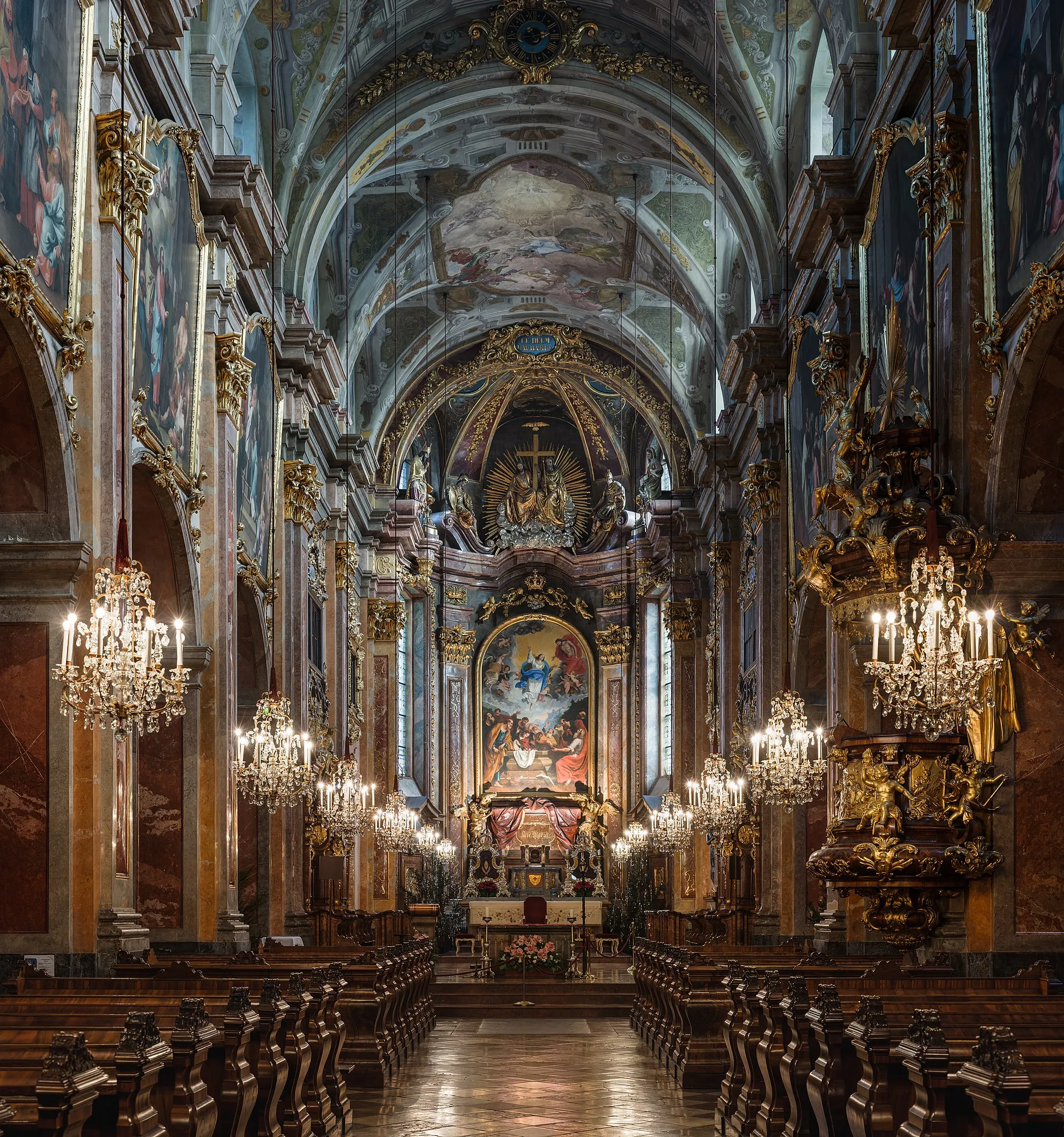
Architect: Jakob Prandtauer
Architectural style: Romanesque architecture
Exterior
The cathedral’s exterior largely retains the layout of the 1150 structure, originally a three-aisled church with twin towers. Rebuilt between 1267 and 1280 in the late Romanesque style, the building’s Baroque appearance is marked by a prominent south tower with a double onion dome. The late Romanesque apse and south façade are among the surviving elements from the original construction. The west façade features a main portal with skylights and a broken pediment, flanked by statues of Saints Hippolytus and Augustine.
Interior
The Baroque interior was designed by Jakob Prandtauer, Joseph Munggenast, Daniel Gran, and Bartolomeo Altomonte, with ceiling frescoes by Thomas Friedrich Gedon. The interior reflects the high Baroque splendor of the period.
Organ and Bells
The cathedral’s organ, built by Metzler in 1973, has 36 stops and is housed in a prospectus from an earlier 1722 organ by Johann Ignaz Egedacher. The bell collection, cast in 1696 by Mathias Prininger, includes a nearly complete set of Baroque bells, with one bell replaced in 1955 after being lost during World War I.
Architectural Highlights
The Baroque reconstruction of the cathedral features exquisite elements, including an ornate altar area and a grand church organ. The interior is adorned with angelic sculptures, which are major attractions for visitors. The cathedral remains an active place of worship where regular prayer services are held.
City of St. Pölten
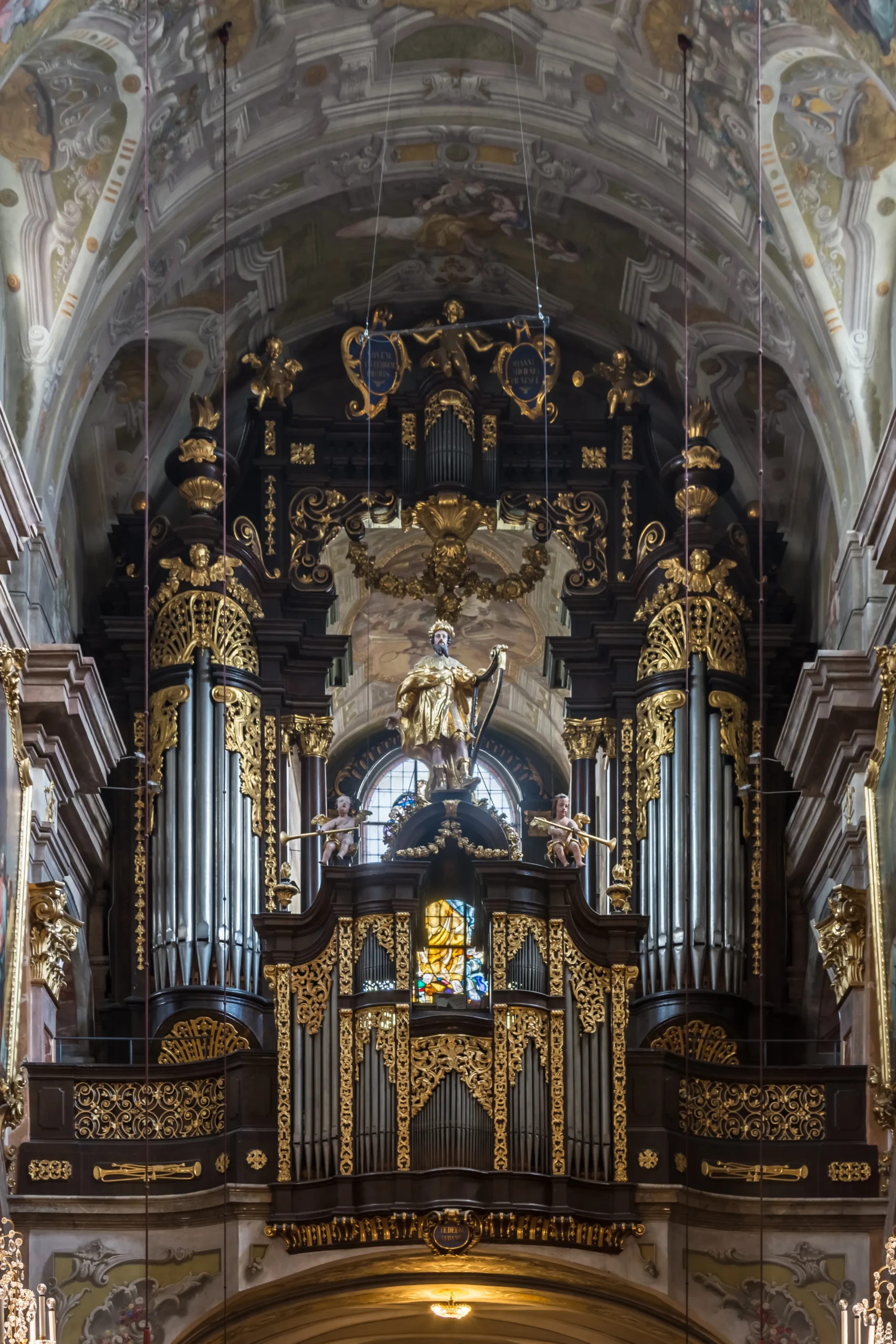
Historical Evolution
St. Pölten’s history spans several epochs, beginning with prehistoric settlements and continuing through the Roman period, migrations, and the Middle Ages. The city was known as Aelium Cetium during Roman rule and was a site of significant historical events, including its submission to Charlemagne and later developments under Hungarian rule.
Baroque and Modernization
The Baroque era marked significant changes in St. Pölten, with architect Jakob Prandtauer contributing to its transformation. The 19th and 20th centuries saw further development, including the impact of the Napoleonic Wars, industrial expansion, and modernization efforts.
Recent Developments
In the late 20th and early 21st centuries, St. Pölten experienced rapid growth and modernization. The city’s elevation to capital status in 1986 spurred extensive development, including new residential and commercial areas, cultural institutions, and infrastructural improvements. The city has received recognition for its commitment to European integration and urban development.
Feast Day
Feast day : 15th August
The feast day of St. Pölten Cathedral, officially known as Dom Mariä Himmelfahrt, is celebrated on August 15. This date is significant in the Roman Catholic tradition as it commemorates the Assumption of the Blessed Virgin Mary, to whom the cathedral is dedicated.
The Assumption of Mary is a major feast in the Catholic Church, celebrating the belief that Mary, the mother of Jesus, was taken up into Heaven at the end of her earthly life. This feast day is observed with special liturgical events and celebrations in the cathedral and throughout the Diocese of St. Pölten.
Church Mass Timing
Holy Masses: 09.15 am and 10.30 am
Saturday and before holidays: 6.30 p.m.: Evening Mass
Weekdays : Mon-Sat: 7:30 am , Tue, Thu, Fri 6pm (not during school holidays)
Rosary prayer : Mon., Tues., Wed., Fri., Sat. after the 7.30 a.m. mass
Church Opening Time:
Laudes :
Tue-Thu 7.00 am (except school holidays and public holidays)
Eucharistic Adoration :
Every Thursday 8.00 – 8.30 am (except summer holidays and public holidays)
Every first Friday (Sacred Heart Friday) 6.30 p.m. to Saturday 7.30 a.m. (except holidays)
Contact Info
Address:
Dompl. 1, 3100 St. Pölten, Austria
Tel : 02742/35 34 02
Accommodations
Connectivities
Airway
The Basilica of Sankt Pölten Cathedral, Dompl. 1, 3100 St. Pölten, Austria to St.Pölten Hbf (Bahnhofplatz), 3100 St. Pölten, Austria 5 min (1.5 km) via Parkpromenade.
Railway
The Basilica of Sankt Pölten Cathedral, Dompl. 1, 3100 St. Pölten, Austria to Völtendorf Airport, 3200 Ober-Grafendorf, Austria 12 min (6.7 km) via Mariazellerstraße/B20 and Ober-Grafendorfer Str./B39


